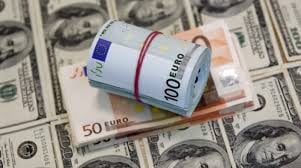Euro Gains Strength as Safe-Haven Currency

The euro has surged to an eight-month high, reaching an exchange rate of 1.1 against the US dollar, before settling slightly above 1.09. This rise confirmed the euro’s role as a safe haven during global market turmoil.
Historically, the euro has been seen as a stable currency due to its high liquidity, status as a major reserve currency, the Eurozone’s large economy, and the European Central Bank’s (ECB) stable policies. Recent global instability, including the war in Ukraine and economic slowdowns, temporarily dented this perception. However, the euro has regained its safe-haven status, particularly in response to a surging Japanese yen and declining US stock markets.
Despite a recent rebound in global stocks, market volatility is expected to persist. This ongoing uncertainty supports the euro’s position as a safe-haven asset. The yen's recent strength, following the Bank of Japan’s interest rate hike, triggered a significant sell-off in equity markets. This sell-off was exacerbated by the unwinding of carry trades, where investors borrow in low-interest-rate currencies like the yen to invest in higher-yielding assets.
What Does This Mean for Me?
Looking ahead, the ECB's interest rate decisions remain crucial. Eurozone inflation rose to 2.6% in July, tempering expectations for a rate cut in September. Signs of economic recovery in the Eurozone could attract further capital inflows, bolstering the euro’s stability. Meanwhile, the US Federal Reserve is expected to reduce interest rates due to recession fears, which may lead to a weaker US dollar.
That’s why the euro’s appeal as a stable asset is likely to strengthen amidst global financial uncertainty, supported by the Eurozone’s economic resilience and strategic policy decisions by the ECB.
More News
.webp)
US Dollar Faces Biggest 6-Month Drop in Half a Century
5 months ago
.webp)
Dollar Slips to Three-Year Low as Trump Eyes Early Fed Appointment
5 months ago
.webp)
AI-Powered Trading Bots Bring a New Kind of Threat
7 months ago
.WEBP)
Euro Value Surges as Markets React to Tariff Shock
8 months ago

Euro’s Slide: What’s Behind the Drop and What’s Next?
11 months ago

Sterling Gains Against Euro as Central Banks Move Apart
1 year ago

Euro Remains Steady Amid Tariff Threats
1 year ago

Euro Stays Under Pressure Amid Economic and Political Shifts
1 year ago